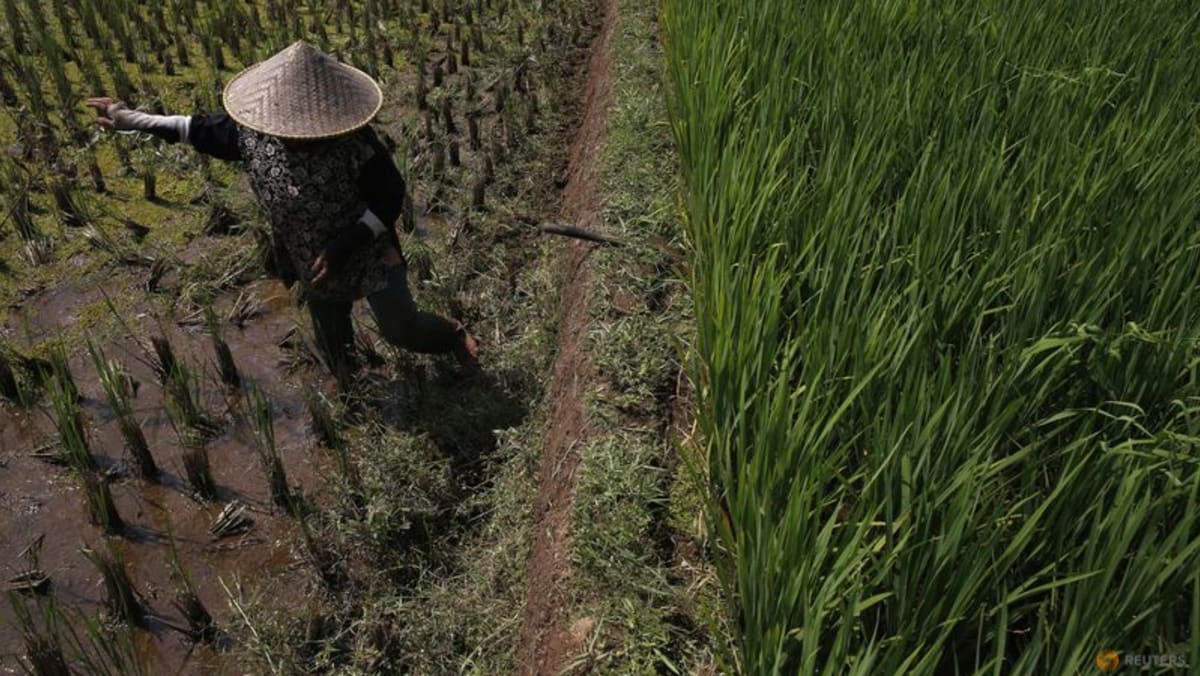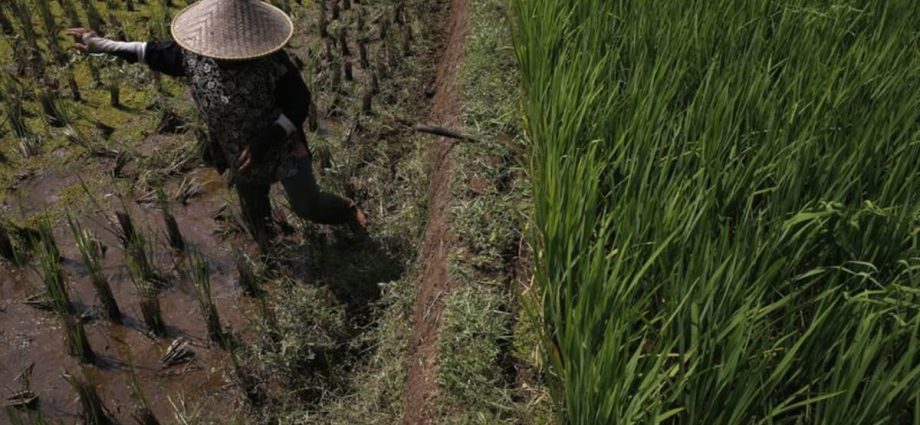
Urea is manufactured by combining ammonia and carbon dioxide in a chamber at about 200 degrees Celsius.
The compound is later evaporated, and the crystals melted to produce urea as prills or granules.
Pupuk Kalimantan Timur’s complex in Bontang city in East Kalimantan province is Indonesia’s largest fertiliser manufacturing facility, with 13 factories spanning over 400 hectares producing non-organic fertilisers such as urea.
NATURAL ALTERNATIVES
Farmers apply fertilisers to their land by first loosening the soil with an aerator, which encourages the flow of air, water and vital nutrients.
They are now trying to reduce reliance on chemical fertilisers and, instead, produce their own organic fertilisers from animal manure.
Farmer Waryana from the town of Indramayu in West Java told CNA there are many benefits to using organic fertilisers.

